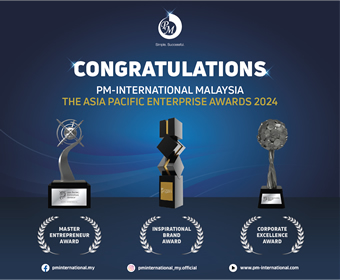In the race to harness the power of artificial intelligence (AI), Singapore aims to get ahead by more than tripling its AI workforce to 15,000 in the next three to five years. This goal is achievable, according to industry observers, who see the figure as a starting point and as a critical mass needed for innovation. But they also highlighted the need to look beyond numbers to ensure workers have the depth of skills needed as well as the ability to make interdisciplinary connections.
“It is certainly not just about the numbers, but more about specific talents and ideas,” said Associate Professor Kan Min Yen of the National University of Singapore’s (NUS) computing school. “As with other areas of (information and communications technology), a single, uniquely integrative individual can catalyse the development of an entire sector of technology that we do not have today.” Tripling the number of AI professionals will help contribute to breadth, but the field also requires deep expertise and cross-linking among industry, academia and start-ups, he added.
The Singapore government announced the 15,000 target on Monday (Dec 4), as part of a revised national AI strategy (NAIS) spurred by recent breakthroughs – particularly in generative AI. The wide-ranging strategy also spans efforts to drive AI creation and usage by companies, support AI start-ups, update national research priorities, and strengthen data sharing and computing power. Singapore also aims to accelerate the exchange of ideas, with plans to establish an “iconic AI site” to nurture a tight-knit knowledge community.
Singapore’s general pipeline of tech talent took a hit when the country outsourced ICT jobs in the 1990s and 2000s, according to Associate Professor Damien Joseph of Nanyang Technological University’s (NTU) business school. This saw system development jobs going to India, or ICT call centre positions going to the Philippines and Ireland, for example. But experts pointed out that Singapore is not alone in falling short of AI expertise today. Thirty-five per cent of companies in the Asia-Pacific see a lack of AI skills as a major factor significantly limiting their evaluation of generative AI capabilities, according to a survey by market intelligence firm International Data Corporation (IDC) in August. This figure is actually lower among Singapore companies, at 22 per cent. In fact, NUS’ Assoc Prof Kan said that globally, Singapore contributes disproportionately more than other countries to the AI talent pool, as it does in many areas of advanced computing technology.
Some of the increase in AI workers that Singapore seeks will come from local universities. In 2020, the undergraduate intake for information and digital technologies degree courses was 3,100 across the country’s six autonomous universities, according to the Education Ministry. But not all graduates will specialise in AI, leaving a gap likely to be filled by other sources, including continuing education and overseas workers. An apprenticeship scheme by AI Singapore – the national programme to develop AI capabilities – will be redesigned as part of NAIS 2.0. Close to 300 people have graduated from the apprenticeship since it started in 2018. About 90 per cent have gone on to become data scientists, machine learning operations engineers, AI engineers, software engineers and other roles.
AI Singapore said its graduates have between five to 15 years of experience, with diverse backgrounds in engineering, banking and finance, teaching, law and human resources. Still, given a worldwide scarcity, Singapore will have to present itself as an attractive destination for AI talent – and it does have some advantages in this area. Assoc Prof Kan pointed to the country’s transparency, suitability as a testbed and interconnectivity. And speed of AI regulation and rollout can allow Singapore to serve as a role model for other countries facing more difficulties scaling up deployment, he said.Mr Adrian Goh, co-founder of tech talent platform Nodeflair, said government support to foster tech trends and welcome innovation – as seen in cryptocurrency-friendly policies – has helped make Singapore attractive.
The country’s strong English proficiency also attracts global companies like FAANG – Meta (formerly Facebook), Apple, Amazon, Netflix and Google – and Nvidia, while the high quality of life appeals to overseas AI talent. Compared to the United States, where tech workers face challenges securing visas, Singapore has a streamlined employment pass system, Mr Goh added. On the other hand, compared to Singapore, other countries in the region offer “cost-efficient growth options” with their emerging talent pools, he said.
Singapore’s software engineers have the highest median salaries among seven Asian economies, according to a recent Nodeflair report. The median salary for a lead software engineer was about S$6,600, versus S$2,400 in Malaysia and S$2,100 in Vietnam, which had the next highest salaries. Dr Lily Phan, IDC’s research director for the future of work in the Asia-Pacific, also cited a lack of “AI-readiness” infrastructure, which was a limiting factor for 47 per cent of Singapore companies her market intelligence firm surveyed. “It’s the combination of different factors to make AI really work: Strategy, infrastructure, skills, governance (regulatory framework), data and culture,” she said.
Singapore’s announcement also opened up questions about what the 15,000 jobs could look like, the skills needed, and how workers in other fields can take advantage of new opportunities. The NAIS 2.0 report differentiates between AI creators who are “top-tier AI talent”, AI users comprising enterprises and the general workforce, and AI practitioners who are tech workers. The 15,000 target applies to the latter group. By that, the government is referring to workers with the skillset to create, implement and deploy AI systems, said Professor Lee Wee Sun of NUS’ School of Computing. To do this, software engineering skills are needed to create reliable systems that can be maintained at scale, he said.
Relevant roles could vary from training large language models to evaluating and making judgments based on AI recommendations, said Dr Phan. NUS’ Assoc Prof Kan said AI practitioners also help to bridge AI adoption in mainstream, commercial products. And they are needed not just in companies but also in the public service, where they can help set up governmental frameworks and regulations to ensure fair and proper use of AI, he added. This will require a general understanding of how AI is trained as well as its current limitations. Assoc Prof Kan also pointed to the importance of interdisciplinary links – for instance, pairing AI understanding with subject matter expertise in a field wanting to benefit from the tech, such as healthcare or education.
Nodeflair’s Mr Goh said that while software engineers and data analysts are already well-suited for transitioning into AI, domain-specific professionals trained in data science and machine learning also have an important role to play. This is because understanding the nuances of a domain is valuable when working on AI applications. While more training is required for such workers to make the career switch to AI, they are “much more valuable talent”, he said.
The level of AI proficiency they would need to attain depends on the role, ranging from a developer creating large language models, to a developer working on a product that incorporates an application programming interface (API). “To illustrate, it’s like comparing building a car engine from scratch (the first scenario) to simply fitting a car engine into the rest of the car (the second scenario),” said Mr Goh. He stressed that even someone with software development experience will need continual learning to make sure their skills stay relevant, given the fast-evolving nature of the AI field. And for those employed by tech companies, basic AI proficiency is increasingly expected as a core technical competency due to the pervasiveness of AI in business operations, said Mr Goh. This is reflected in offerings at universities, where AI is being incorporated as a core subject for computer science students.
All of NUS’ roughly 900 computer science students annually are required to take a compulsory AI module, and the university is in the process of setting up a graphics processing unit (GPU) cluster for its AI courses, said NUS’ Prof Lee. University programmes focusing on interdisciplinary AI knowledge are also coming up. In November, NTU announced a new four-year bachelor of applied computing in finance, with integrated courses like machine learning in finance. “By building a strong AI ecosystem, Singapore is in a strong position to be a regional AI hub,” said Prof Lee. “We have a strong education system that is able to develop the local talent. (And) we can attract some of the best talents in the region.”
Source: CNA/dv(jo)
The post Tripling Singapore’s AI workforce to 15,000 not just about numbers, but ‘talents and ideas’: appeared first on HR ASIA.
















